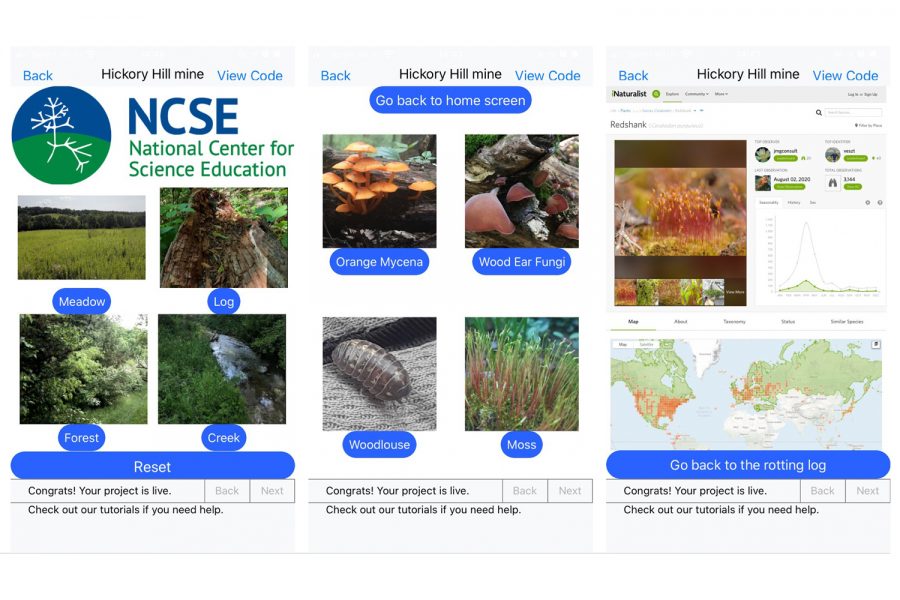UI graduate students create apps to connect kids with science
Students are bridging the barrier the pandemic has created to scientific outreach, bringing interactive apps and games for children and adults to use to understand more about science.
The home screen of the Hickory Hill Hunt app displays its different elements. Designed by University of Iowa PhD Student Rachel Larson, the app is intended to help its users learn about wildlife. (Contributed)
October 7, 2020
Interactive wildlife apps and board games developed by University of Iowa doctoral students are connecting children and adults to information about nature as the pandemic curtails in-person wildlife education.
One graduate student who’s worked on developing both an app and a board game as part of community outreach, Rachel Larson is a graduate student in the Department of Geographic and Sustainability Sciences who said she has been particularly interested in interactions between wildlife and urbanization.
She worked on her app as a fellowship through the National Center for Science Education, along with a few other students. Initially she planned to take part in an in-person focused program. This changed with the pandemic, however, making Larson question how to bring science to people without physically being around them.
Using data about local bird species already collected at the university with the help of Larson’s advisor, the app shows how climate change could influence local bird species.
“I wanted to combine our bird research with one of the National Center for Science Education’s passions, which is climate change,” she said, “I thought I could make an app that if you were at a park in Iowa City, you could click on the picture of a bird and see if they will still be around under different climate scenarios.”
The app has a list of pictures of birds and underneath each picture, and the bird says “here today” with a question mark. Clicking on the picture tells the user whether the bird will still be there under predicted climate scenarios. If the climate warms 1.5 degrees, Larson said, the user may not see that bird species anymore and the picture of the bird will fly away.
Another student working on an interactive wildlife app is graduate biology student Briante Najev. She mainly focuses on sexual reproduction of species and works specifically with invasive snails. With her work, she studies the population density of these snails.
Najev’s app focuses on Hickory Hill Park in Iowa City. She focuses on the five different habitats of the park.
The app shows what kinds of animals, plants, fungus, or organisms might live in that specific spot. After clicking on a spot, users are directed to INaturalist — a science-based social media platform that lists information about organisms as well as connections to others who can answer questions.
Engaging with people in a pandemic is a new challenge to navigate for public engagers or outreach scientists, Najev said, so an app can still connect people with science.
“I feel like a lot of people nowadays have smartphones, and they can just go on apps anytime they want. So why not make an educational app about nature?” she said. “You know, I see it only really benefiting people that are interested, or maybe parents that are interacting with their children, and they might have children that are into science, education, or also naturalists.”
Another Ph.D. student and a colleague of Najev, Joseph Jalinsky, has also been working on a game specifically for children.
Jalinsky is creating an interactive board game similar to the game mousetrap, that helps children learn the process of evolution. One of the main problems in scientific outreach in evolutionary biology is teaching these concepts to kids, he said.
“My project was essentially to create a mousetrap game that goes through the different forces of evolution, while maintaining a consistent truth to what evolution is, which is actually a lot harder than it seems on the surface,” he said.
His app goes through natural selection, genetic drift, migration, and mutation in evolution.
Jalinsky explained that apps and games are a way to bring science to people that might not have this knowledge previously accessible.
“The barrier to access devices for these applications are getting lower and lower,” he said. “A lot of people can access the technology which the whole point is to bring science to areas in which it was previously inaccessible.”






